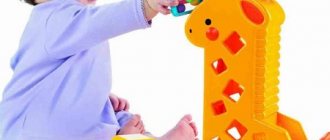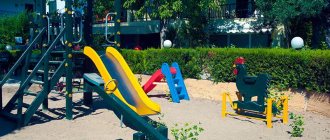Development of fine motor skills in children 3 years old
Finger gymnastics is considered the most effective way to develop fine motor skills in a baby’s hands from birth. With the help of properly selected games, a child’s speech and intellectual abilities develop.
• Place pasta, beans and nuts in a large bowl. The child is given the task of using his fingers to sort beans, nuts, pasta into different containers separately. • We paint with finger paints. This exercise helps to holistically influence the baby’s development. Emotional and aesthetic development occurs by applying paints of various colors to paper. By allowing the child to draw a picture with his fingers, the child develops his fingertips and feels the world better. Ask to draw a picture on the theme “Summer”, “Winter”, “Walk”. • Put on the doll or yourself a jacket with different buttons and zippers. We teach the baby how to button and unfasten buttons, as well as how to operate a zipper. • During bathing, you can invite your baby to catch small objects from the bathtub into a certain bowl with his hands: lids, jars, Kinder Surprise toys. • At three years old, the baby is able to handle scissors and paper perfectly. We invite him to create a collage, postcard, picture using colored paper, cardboard, small cereals, pasta. It is better to purchase glue in a pencil, so it is easier for the child to handle it. • Benefits with stickers have won the hearts of children from the age of 2. By the age of 3, you can choose more complex elements for gluing and small parts. • We select lids for various bottles and jars. The baby should be able to open and twist them.
Game No. 2 Learning to count “Color by numbers”
Children and parents love this game very much! All you need are funny pictures and pencils. Just color the pictures with the colors you want. Look how crazy it turns out. The child remembers numbers, develops fine motor skills, and studies animals in this game!
Find a complete collection of pictures for coloring for children 3,4,5 years old HERE.
Attention! How to copy coloring pictures from our website?
- Choose any picture. Right-click on the picture.
- Select "Save Image As". Save it in a convenient folder and print it from there!
Tasks for developing attention in 3-year-old children
Concentration is an important skill that will be useful for children in kindergarten and school. Tasks for the development of attention are aimed at ensuring that the child is able to notice details and analyze.
• During a walk, you can ask your child to find and name objects that are similar in some way: “Find green objects.”
• Offer tasks to find identical objects from many similar ones. For example, socks are great for this exercise. Lay them out in a chaotic order, and the child must collect them in pairs, arranging them according to the picture.
• Attention game “Find the print”. The picture should show boots, shoes, boots, sandals. On the second part of the sheet there are their imprinted traces. The child needs to connect the shoes with the footprints with a line. • Place shapes cut out of colored cardboard in front of the baby: circle, triangle, square, rectangle. Help him make a truck, a house, a forest from the figures.
• Ask them to find differences in two pictures. The drawing should be large enough, and the details for searching should be bright. In the future it will be possible to complicate the drawings.
Game No. 2 Where is this letter hidden?!
- Draw or find the beautiful letters you have learned. Print each letter in duplicate
- Select a game letter. Let's assume this is the letter "F"
- Keep one letter for yourself
- Hide the second copy of the letter and invite the child to find it
- Hide the remaining letters in accessible places as well.
- Show your child a letter, name it and ask him to find it
- Tell me if your child is confused and needs help.
- Remember! The child should be happy while playing and should not be upset that he cannot find the letter. If he starts to worry, then this method will become uninteresting for him.
Speech development tasks for three-year-old children
The most basic lessons in speech development are the usual reading of children's books to your baby. You can start a special ritual: evening reading with the whole family for 30-40 minutes. Reading should be accompanied by a discussion of events, to give the child an idea of why the heroes did this.
1. “Continue the tale . We take a story already familiar to the child about a kolobok or any other hero and offer to continue the story. During the story, the baby develops his imagination. Encourage your little one's interesting train of thought.
2. “Finish the phrase . Playing with an adult captivates the baby and enriches his vocabulary with new phrases. Offer tasks so that the child can think logically and add the correct expressions to his statements. For example: an adult says “It’s bright outside today...”, “When it rains, I’ll take it outside...”. And the baby ends the phrase with the words: sun, umbrella, rubber boots, etc.
3. “Describe the subject . The child needs to form and expand his vocabulary with new words and expressions. Use tasks to describe various objects. Show him the doll, take turns describing it: the doll’s name is Lera, the doll is wearing a beautiful red dress, she can close her eyes. The same actions can be carried out with any objects: an apple, a typewriter, a pyramid, a toothbrush, a kettle.
4. “Describe the walk . Go outside and every time ask your child about what he sees, what the weather is like now, how many birds you have fed, what color the road is. Add new elements each time. In autumn you can collect a collection of colorful leaves and pine cones. In summer, collect beautiful pebbles and describe them in 1-2 words.
Night terrors: why they happen and what to do about them
What are nightmares
Nightmares are sleep disturbances in which a child may suddenly cry, scream, moan, or mutter in bed with eyes wide open but not awake. Because she is stuck in a sort of twilight zone between sleep and wakefulness, she is unaware of your presence and is unlikely to respond to anything you say or do. The episode lasts anywhere from two to 40 minutes, and when it ends, your child suddenly goes back to sleep with no memory of the incident.
How are nightmares different from night terrors?
Sixtine fights a monster in her bedroom in Laure Fauvel's “Terreurs”, 2014, in Paris, France.
An imaginative photographer has brought to life monsters that haunt children's nightmares. Armed with sticks, wands and swords the eight and nine year-olds appear to be getting the upper-hand against the villains. Parisian photographer Laure Fauvel, 22, said: I wanted the children not to be victims and to fight the monsters. (Photo by Laure Fauvel/Barcroft Media) Unlike a night terror, a nightmare leaves your child truly awake—she can remember the dream and sometimes talk about it. In addition, children have nightmares during sleep, often in the early morning hours between 2 and 6 am. On the other hand, they usually experience night terrors in the first few hours of the night during deep, dreamless sleep.
The easiest way to tell the difference between a night terror and a nightmare is to ask yourself who is more upset that morning. If your child is more agitated, he had a nightmare. If you're the one who's concerned, she probably had a night terror. The “horror” lasts much longer for the parent who observed it than for the child who experienced it.
What causes nightmares and can they be prevented?
There is no definitive way to prevent nightmares because no one knows for sure what causes them. Nightmares can occur due to erratic or inadequate sleep patterns or any type of sleep deprivation. They are caused by stress during the day or excessive fatigue. What will be known is that, by themselves, nightmares do not mean the child has a psychological problem.
Addressing any other sleep problems your child has (such as getting up in the middle of the night) and ensuring they have regular, calming bedtimes and get enough hours of sleep can help prevent night terrors. In some cases, nightmares are caused by sleep apnea, a serious but treatable disorder in which enlarged tonsils and adenoids (normal tissue in the throat) block the airway during sleep, making breathing difficult and causing the child to become partially awake.
Intellectual development of children 3 years old
The versatility of the adult world should help the child’s intellectual development and introduce him to the world of art.
Theater . Children listen to fairy tales with pleasure and can retell and explain the actions of the characters. They will enjoy taking part in a home performance even more. You can make a puppet theater and prepare props for the simplest fairy tales: bun, hen ryaba, teremok.
Drawing . By completing tasks with drawing elements, the child gets acquainted with various natural phenomena and objects. Knowledge of basic colors and various shades is being consolidated. We invite the little one to color the picture with colored pencils. Particularly relevant are pictures where one half is painted and it is necessary to select colors according to the example for the second half. Teach your little one to color carefully, without going beyond the boundaries of the images.
Music . It is recommended to turn on classical music while drawing. Classic works help the young creature to feel the subtleties of this world. Learn children's songs with your child: “Smile”, “Friendship”, “On the Road of Goodness” and others. Children may not immediately remember all the words, but they will be able to repeat individual lines. Music helps develop imagination.
Mimisaur brushes his teeth!
Using this application, you can instill in your child the habit of brushing their teeth every day. The hero of the application, Mimizaurus, brushes his teeth together with you: this happens in short one-minute videos accompanied by rhythmic music.
This is a free program with 28 videos loaded on different topics. To prevent your child from losing interest in sports, after each viewing you receive an honorary badge for your piggy bank.
The application is in Russian, but for variety you can include videos in English, German or French.
Montessori Numberland
Maria Montessori's methods of child development have finally been adapted for gadgets. In this particular application, the developers have created tasks for teaching counting to children aged 3 years and older.
Numbers are introduced gradually: if at first the child simply learns to write and recognize numbers in a picture, then by the end of training he will already be able to count and solve simple logic problems.
The application is completely safe for children, as it is closed from advertising. Despite the scientific approach, the program is not without bright animation and funny children's stories.
Smart Grow. Drawing & Coloring
Drawing application for children from 3 years old. The child is offered a choice of about 20 characters, which can be painted to your taste and color. All details of the picture are very large, which corresponds to the age marking of the application.
You can choose not only animals, but also transport - a car, a hot air balloon and a submarine. After the child colors the picture, you can bring it to life: funny music plays on the screen, and you can play with the hero.
The program interface is very simple, so even a three-year-old child can easily understand it.










